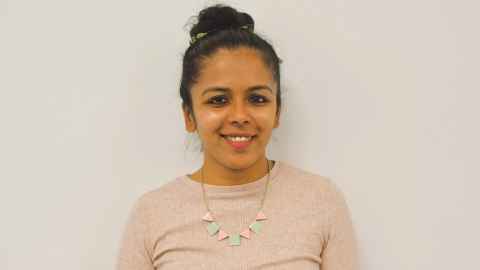Three engineering projects addressing global challenges have received Marsden Fund grants totalling over $1 million.


Researchers from the Faculty of Engineering are blending ancient Roman wisdom with Māori cultural knowledge in a bid to reduce carbon emissions and provide an eco-friendly alternative to traditional concrete.
Dr Enrique del Rey Castillo and his research team are exploring how to develop a sustainable alternative to Ordinary Portland Cement (OPC), a major component of concrete that contributes to 5-8% of global greenhouse gas emissions.
The project is one of three from the Faculty of Engineering to be generously awarded a Marsden Fund grant of $360,000 over three years to support groundbreaking research.
Ancient Roman concrete, made from lime and volcanic materials like pumice, boasts a smaller carbon footprint and is also thought to have “self-healing” properties, where tiny cracks can mend themselves over time.
This new alternative will use locally abundant materials from Aotearoa New Zealand, including volcanic ash (pumice) and kaimoana seashells. While these materials have been used in various ways by Māori in the past, their potential for concrete production hasn’t been thoroughly explored until now.
Dr del Rey Castillo’s research team will delve into the unique properties of pumice from Te Arawa and seashell powder from Ngātiwai aquaculture farms, evaluating their suitability as partial cement replacements. They will also investigate whether concrete made from these materials can exhibit the “self-healing” characteristics observed in ancient Roman concrete.
The research will be carried out in partnership with mana whenua, who are impacted by the polluting industry of concrete production and who stand to benefit from sustainable use of these natural resources, says Dr del Rey Castillo.


Bridging the language gap in speech technology
In the world of speech technology, users often find themselves struggling to understand unfamiliar accents or languages produced by machines, a common and frustrating experience.
This issue is particularly pronounced when it comes to languages with limited resources, such as New Zealand English and te reo Māori, which are frequently overlooked in the training data for speech technology. Currently, only 99 out of 7,097 world languages are supported by these systems, highlighting a substantial bias against low-resource languages, a problem that remains largely unexplored.
Dr Jesin James’ Marsden Fund grant of $360,000 is for an innovative approach to the issue, which incorporates linguistic techniques to pinpoint specific sounds that are inaccurately produced by speech technology and connects these inaccuracies with human perception.
By laying the groundwork in this field, Dr James aims to quantify and address bias in speech technology during its development stages. This approach offers the unique advantage of tackling bias before it becomes ingrained in the technology.
“In 2023, when technology development is booming, the benefits of speech technology should be readily available to everyone, especially those who need them the most, such as the vocally impaired. Expecting someone to learn a new language, such as American English, so that they can use speech and language technology is not equitable,” says Dr James.


Unlocking the power of hydrogen
Hydrogen, often touted as a clean and versatile energy source, holds immense promise in the fight against climate change. However, producing hydrogen efficiently is no small feat.
Dr Wen Zhang’s Marsden Fund grant of $360,000 will help to investigate the role of liquid metals in on-demand hydrogen production.
The key lies in a process where aluminium helps generate hydrogen from water. However, aluminium’s surface is covered by a passive layer known as alumina, making it challenging to utilise aluminium effectively.
To tackle this challenge, Dr Zhang and her research team have proposed an innovative approach – the use of an electrowetting process. This process aims to alter the way the aluminium surface behaves, essentially making it more “welcoming” to specific types of liquid metals. Once these liquid metals spread across the aluminium surface, they can significantly enhance the efficiency of hydrogen production in the aluminium-water reaction.
“We hope that with this cost-effective process, we can achieve high-efficiency, on-site and instant green hydrogen production,” says Dr Zhang.






































